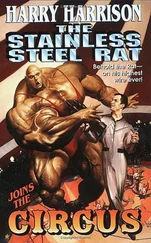Harry Harrison - The Turing Option
Здесь есть возможность читать онлайн «Harry Harrison - The Turing Option» весь текст электронной книги совершенно бесплатно (целиком полную версию без сокращений). В некоторых случаях можно слушать аудио, скачать через торрент в формате fb2 и присутствует краткое содержание. Год выпуска: 1992, ISBN: 1992, Издательство: Viking, Жанр: Фантастика и фэнтези, на английском языке. Описание произведения, (предисловие) а так же отзывы посетителей доступны на портале библиотеки ЛибКат.
- Название:The Turing Option
- Автор:
- Издательство:Viking
- Жанр:
- Год:1992
- ISBN:978-0-670-84528-6
- Рейтинг книги:3 / 5. Голосов: 1
-
Избранное:Добавить в избранное
- Отзывы:
-
Ваша оценка:
- 60
- 1
- 2
- 3
- 4
- 5
The Turing Option: краткое содержание, описание и аннотация
Предлагаем к чтению аннотацию, описание, краткое содержание или предисловие (зависит от того, что написал сам автор книги «The Turing Option»). Если вы не нашли необходимую информацию о книге — напишите в комментариях, мы постараемся отыскать её.
The Turing Option — читать онлайн бесплатно полную книгу (весь текст) целиком
Ниже представлен текст книги, разбитый по страницам. Система сохранения места последней прочитанной страницы, позволяет с удобством читать онлайн бесплатно книгу «The Turing Option», без необходимости каждый раз заново искать на чём Вы остановились. Поставьте закладку, и сможете в любой момент перейти на страницу, на которой закончили чтение.
Интервал:
Закладка:
“I don’t think there’d be much chance of that. We’re talking desert here, not well-developed real estate, and it’s very fragile ecology. Even a scratch on the desert floor can take several decades to disappear. While that’s being done, the FBI will be going through the building company records and those of the copter rental firm. Now that we know where to look — and if we are correct — we will be able to find signs, find a trail, and find something. Let me out, Brian.”
“You betcha. Going to keep us informed — ?”
“The instant we uncover anything at all your phone is going to ring. Both your phones.” He patted the computer terminal. “You’re a great dick, Dick Tracy.”
“I’ll leave the program running,” Shelly said when Brian had locked Ben out and had returned. “It has taken us this far — but it probably can’t go any further until we have some new input. You said earlier you had some work you wanted me to do with you today.”
“I did, but it can wait. I am really going to have trouble concentrating until Ben calls back. What I can do is show you the basic setup that we will be assembling. I have most of the AI body here, but it’s as brainless as a Second Lieutenant.”
“Brian! Where on earth did you pick up a phrase like that?”
“Oh, television I guess. Come along.” He turned quickly away so she would not see his face redden. He was going to have to be a bit more careful with his new G.I. expressions. In the excitement of the moment he had completely forgotten that Shelly was an Air Force officer. They went into Brian’s lab.
“My goodness — what’s that?” she said, pointing to the strange object standing on the workbench. “I’ve never seen anything like it before.”
“It’s easy to understand why. There can’t be more than a half dozen in existence. The latest advance in microtechnology.”
“Looks more like a tree pulled out of the ground — roots and all.” It was a good description. The upper part really did resemble a bifurcated tree trunk with its two multiply jointed metal stalks, each about a foot long, sticking up into the air. Each stalk was tipped with a metal globe that looked very much like a Christmas tree ornament. The two lower stalks were far different. They each divided in two — and each half split in two again. Almost endlessly because with each division the branches became smaller until they were as thin as broom straws.
“Metal brooms?” Shelly asked.
“They do look like that, in a way, but it is something far more complex than that. This is the body that our AI will use. But I’m not too concerned about the AI’s physical shape now. Robot technology is pretty modular, almost a matter of taking parts off the shelf. Even computer components are modular.”
“Then software is your main concern.”
“Exactly. And it’s not like conventional programming but more like inventing the anatomy of a brain: which sections of cortex and midbrain are interconnected by which kinds and what size bundles. Truthfully, very much the same sorts of bundles that had to be restored in my own brain operation.”
Shelly was aware of the pain behind his words, changed the subject quickly. “I don’t see any wires. Does that mean you’re sending the information directly to each joint?”
“Yup. All modules are linked into a wireless communication network. Plenty of channels and plenty of speed. The trick is that each joint is almost autonomous. Has its own motors and sensors. So each of them needs only a single power wire.”
“I love it. Mechanically it looks amazingly simple. If any joint malfunctions, just replace that section — and nothing else has to be changed. But the software operating system must be awfully complicated.”
“Well, yes and no. The code itself is truly horrible, but most of it is constructed automatically by the LAMA operating system. Watch this. I have a good part of that working already.”
Brian went to the terminal on the bench and brought up the control program, then touched the keys. On the bench the telerobot stirred and hummed. There was a rustle as the circuitry activated the joints, causing them to straighten. Irises opened on the two metal spheres, revealing the lenses behind them. They moved back and forth in a test pattern, then were still. Shelly walked over and looked closely at the charge coupled pickups.
“It’s just a suggestion — but I think that three eyes would be better than two.”
“Why?”
“There are errors that two-eye stereo can make. The third eye adds error-checking ability. And it can see more of a subject, making it easier to locate and identify things.” She walked around the machine. “Looks like you gave it everything here except a brain.”
“Right — and that’s what comes next.”
“Great. Then where do we start?”
“At the very beginning. My plan is to follow the original notes. First we provide the system with a huge reservoir of preprogrammed commonsense knowledge. Then we’ll add in all the additional programs it will need to do all its various jobs. And enough extra alternative units — including the managers — so that the system will continue to work even if some units fail. Designing an artificial mind is like evolving an animal — so my plan is to use the principles that evolved to manage the brain. That way, we’ll end up with a system that is neither too centralized nor too diffusely distributed. In fact I’m already using some of those ideas right here with Robin-1.”
“Why did you give it that name?”
“That’s what it was called in the notes — apparently an acronym for ‘robot intelligence.’ ”
“You said you already had some of your society-of-managers system on line. Could you show me more of how it works? Because the sub-programs in my Dick Tracy system have managers too — but never more than one manager for each program. With more than one manager I wouldn’t know where to put the blame when anything fails. Won’t it be almost impossible to make such a system work reliably?”
“On the contrary, it should make that easier to do, because each of the managers works closely with other alternative managers, so that when any one of them starts to fail another one can take over. It will be easier to explain after I finish repairing this connector. Would you please hand me that clipper?”
Shelly went over to the workbench and brought Brian the tool.
“What did you just do?” Brian asked her.
“I handed you the clipper. Why do you ask?”
“Because I want you to explain how you got it.”
“What do you mean? I simply walked over to the workbench and brought it back to you.”
“Simply, yes — but how did you know how far away it was?”
“Brian — are you trying to be difficult? I looked over and saw it on the bench.”
“I’m not being difficult. I’m only making a point. How did you decide to walk, instead of simply reaching for it?”
“It was too far out of reach, that’s why.”
“And how did you know that?”
“Now you’re being stupid. I could see how far it was. About two meters. Much too far to reach.”
“Sorry, I didn’t mean to seem obtuse. I meant to ask you for a theory of how you did it. That is, I’m asking what mechanism in your brain figured out the distance from your hand to the clipper.”
“Well, I don’t know, really. It was entirely unconscious. But I suppose I used both of my eyes for distance perception.”
“Okay, but how does that actually work?”
“Stereoscopic distance perception.”
“Are you sure that’s how you judged the distance?”
“Not really. It could have been by its apparent size. And I know how far away the bench is as well.”
Читать дальшеИнтервал:
Закладка:
Похожие книги на «The Turing Option»
Представляем Вашему вниманию похожие книги на «The Turing Option» списком для выбора. Мы отобрали схожую по названию и смыслу литературу в надежде предоставить читателям больше вариантов отыскать новые, интересные, ещё непрочитанные произведения.
Обсуждение, отзывы о книге «The Turing Option» и просто собственные мнения читателей. Оставьте ваши комментарии, напишите, что Вы думаете о произведении, его смысле или главных героях. Укажите что конкретно понравилось, а что нет, и почему Вы так считаете.










